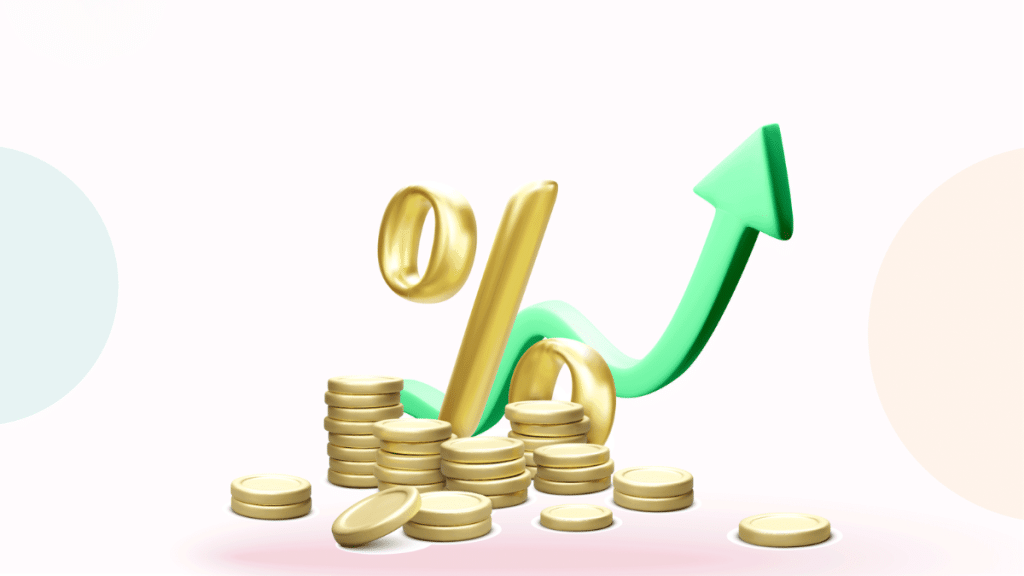Have you ever checked the FD interest rates and noticed they are not the same every time? Sometimes, they go up. Sometimes they drop. There are times when you grow sceptical and think about whether to wait for a better rate or lock it in at the moment.
You really need to learn about the reasons behind these FD rate fluctuations to save yourself from any such dilemma and come up with smarter investment decisions. So, let’s tell you when is the right time to invest.
Why Do FD Interest Rates Keep Changing?
FD rates don’t stay still because banks and the economy don’t either. Here’s a look at the key reasons:
1. Repo Rate Adjustments by RBI
The RBI has the repo rate at which banks borrow money from them.
- If the RBI increases the repo rate to control inflation, banks need more money and will offer higher FD rates to attract deposits.
- If the RBI reduces the repo rate to boost spending, FD rates usually drop.
2. Inflation Trends
Inflation eats into your purchasing power. When inflation is high:
- The RBI may hike interest rates to cool things down.
- Banks, in turn, raise FD rates to stay attractive.
During low inflation? Expect rates to remain steady or fall.
3. Liquidity in Banks
When banks already have a lot of money (liquidity), they don’t need more from depositors. So, they may offer lower FD rates. But when cash is tight, they raise rates to bring in deposits.
4. Loan Demand
If more people are taking loans, banks need more funds. To gather money for lending, they may increase FD interest rates. Banks usually reduce rates when they see a reduction in borrowing since they don’t need extra funds urgently.
5. Global Economic Trends
Indian banks may also hike FD rates when they rise in other countries, like the US. This way, they stay competitive and attract investors.
6. Bank-Specific Goals and Strategies
Sometimes, banks raise FD rates for a short period. It can be at times like the end of a quarter or during festivals to meet targets or attract new customers.
When is the Best Time to Invest in FDs?
Now that you know why FD rates move, let’s talk timing. Here’s how to decide the right moment to invest:
During Rising Interest Rate Periods
You can go with short-term FDs (like 1 year). So, when your FD matures, you can reinvest at a higher rate. Good strategy when RBI is raising rates or inflation is high.
During Falling Interest Rate Periods
If rates seem to be heading down, lock your money in a long-term FD (3–5 years) at the current higher rate. This protects your returns even if future FD rates drop. Ideal when the economy is stabilising or when the RBI cuts rates.
During High Inflation
During inflation rises, banks often raise FD rates to collect funds. So, short-term FDs can be rewarding.
During Festivals or Quarter-End Offers
Banks sometimes roll out special FD interest rates during festivals, new years, or fiscal quarter-ends. So, compare rates and grab a better deal.
Smart Tips to Maximise Your FD Investment
Some useful tips for your FD investment are as follows:
1. Use the FD Laddering Strategy: Instead of putting all your money into one FD, split it into multiple FDs with different tenures. This gives you regular liquidity and flexibility to reinvest as rates rise.
2. Compare Rates Across Banks: Private banks and NBFCs often offer slightly better FD rates than public sector banks. Shop around before investing.
3. Stay Updated: To time your FD investments better, pay attention to the following:
- RBI announcements
- Inflation trends
- Market news
4. Review Your Investment Goals: Choose FD tenures that match your needs, and don’t chase rates blindly.
Final Thoughts
So, FDs are a popular and reliable investment option, but you need to time it well to get the most out of it. FD interest rates are affected by several factors, as you read above, so stay aware of economic trends. Also, understand the movement of FD rates if you want to get the most out of your money.

